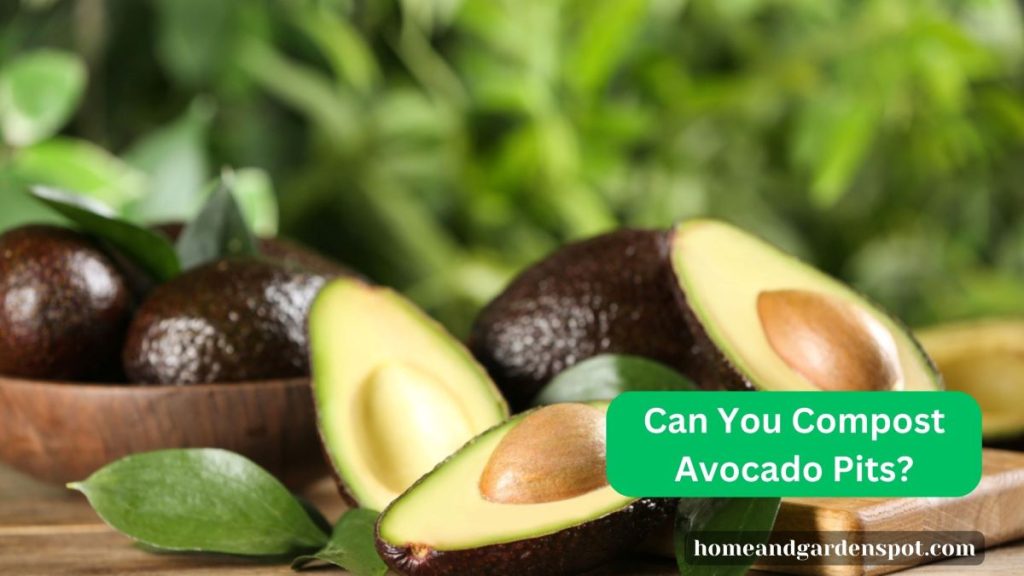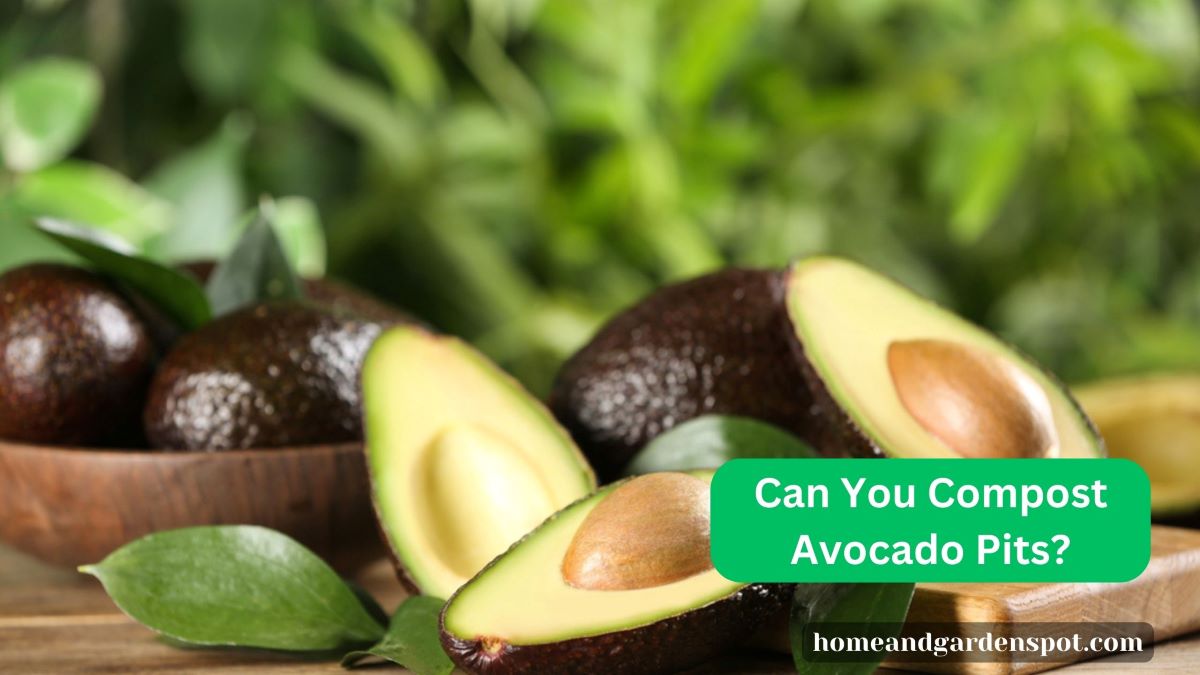Avocado pits are often overlooked when considering compostable materials due to their hardness and slow decomposition rate.
However, exploring the composting potential of avocado pits can provide valuable insights into sustainable waste management practices and soil quality enhancement.
In this blog post, I will discuss the composition of avocado pits, the factors influencing their compostability, and the step-by-step process for incorporating them into your compost pile.
I will also highlight the precautions and considerations necessary to ensure successful composting while addressing the broader importance of composting in reducing waste and enriching our soils.

Are Avocado Pits Biodegradable?
Yes, avocado pits are biodegradable, but their biodegradation rate can vary depending on their composition and environmental conditions.
Avocado pits consist of an outer husk or shell, which is hard and durable, and an inner seed, which is softer and contains more moisture.
Due to its toughness and lignin content, the husk is less readily biodegradable and can take longer to break down in natural environments.
The inner seed, however, is more biodegradable compared to the husk. Its higher moisture content and softer nature make it prone to decomposition, especially when exposed to microbial activity in the right environmental conditions.
Several factors influence the biodegradation of avocado pits, including environmental conditions (such as moisture and temperature), size and preparation (chopping or grinding), and whether they are added to a compost pile. In a well-maintained compost pile, avocado pits can decompose more effectively, particularly if they are prepared properly by breaking them into smaller pieces.
Can You Compost Avocado Pits?
Yes, you can compost avocado pits. Chopping or grinding them into smaller pieces can facilitate the composting process.
It’s essential to balance the carbon-to-nitrogen ratio, maintain proper composting conditions, and monitor progress to ensure effective decomposition.
Composting avocado pits is a sustainable way to reduce waste and enrich soil.
Potential Benefits Of Composting Avocado Pits
1. It Adds Nutrients to Compost
Composting avocado pits offers the advantage of incorporating valuable nutrients into your compost pile.
Despite their slow decomposition rate, avocado pits contain essential elements such as potassium, calcium, magnesium, and trace minerals.
When these pits break down during composting, these nutrients become available in the resulting compost. This nutrient-rich compost is a valuable resource for gardening and farming.
Adding these nutrients to the compost enriches it, enhancing its overall quality.
As a result, the compost becomes an excellent soil conditioner that provides a balanced blend of nutrients to support plant growth.
Plants require these nutrients for various essential functions, and the composted avocado pits contribute to meeting these needs.
This can lead to healthier plants with improved vigor and productivity, making it an eco-friendly way to enhance soil fertility.
2. It Enrichs The Soil
Composting avocado pits goes beyond nutrient addition; it significantly contributes to soil enrichment.
The organic matter derived from the decomposition of avocado pits is a key factor here. This organic matter works wonders for its overall health and structure when mixed into the soil.
Firstly, it enhances soil structure by improving its texture and crumbly consistency.
This benefits root development by allowing roots to penetrate the soil more easily, ensuring better access to nutrients and water.
Additionally, the organic matter improves moisture retention, preventing soil from drying out too quickly, especially in arid conditions, and promoting consistent hydration for plants.
Another crucial aspect of soil enrichment through composted avocado pits is the stimulation of microbial activity.
Organic matter serves as a food source for beneficial microorganisms in the soil. As the microbe population thrives, it facilitates the decomposition of other organic materials, further enriching the soil with nutrients.
This microbial activity creates a dynamic, fertile soil ecosystem supporting plant growth.
Furthermore, avocado pits have a nearly neutral pH, which helps balance soil pH levels.
This is especially valuable in soils that tend to be too acidic or alkaline, as it promotes a more suitable pH range for a broader spectrum of plants.
How To Compost Avocado Pits
Step 1: Preparation of Avocado Pits
- Begin by collecting avocado pits from your kitchen or garden waste.
- To facilitate the composting process, preparing the pits is essential. Start by chopping or grinding them into smaller pieces. This helps expose more surface area, which accelerates decomposition.
Step 2: Balance Carbon-to-Nitrogen Ratio
- Avocado pits are considered “carbon-rich” materials in composting, also known as “browns.”
- To create a balanced compost pile, mix the chopped avocado pits with “nitrogen-rich” materials, such as kitchen scraps (e.g., vegetable peelings), grass clippings, or other green materials. The ideal carbon-to-nitrogen ratio in compost is roughly 25-30 parts carbon to 1 part nitrogen. This balance ensures efficient decomposition.
Step 3: Incorporate into Compost Pile
- Layer the prepared avocado pit pieces into your compost pile or bin, alternating with other organic materials like kitchen scraps, leaves, or yard waste.
- Even the distribution of avocado pit pieces throughout the pile ensures uniform decomposition and aeration.
Step 4: Maintain Proper Conditions
- Composting requires specific environmental conditions to be effective. Regularly turn and aerate your compost pile to provide oxygen to the microorganisms responsible for breaking down the materials.
- Maintain adequate moisture levels. The compost pile should feel damp, like a wrung-out sponge, but not soggy. Proper moisture ensures that microorganisms can thrive and decompose the organic matter.
Step 5: Monitor Temperature and Progress
- Composting generates heat as microorganisms break down organic matter. Monitor the internal temperature of your compost pile with a compost thermometer.
- The ideal temperature range for efficient decomposition is between 130°F to 160°F (54°C to 71°C). If your pile reaches these temperatures, the composting process is working effectively.
- Over time, you’ll notice that the avocado pit pieces begin to break down into smaller, less recognizable fragments.
Step 6: Harvesting Compost
- Depending on the composting conditions and methods, composting avocado pits can take several months to a year.
- When your compost is ready, harvest it. You may find that some remnants of the avocado pits remain, but they should be significantly decomposed.
- Use the finished compost to enrich your garden soil, improve plant health, and promote robust plant growth.
Factors Influencing Avocado Pits Compostability
1. Size and Preparation of Avocado Pits
1) Chopping or Grinding
Avocado pits, by nature, have a tough outer husk and a softer inner seed. The size and preparation of avocado pits significantly impact their compostability.
It is essential to chop or grind the pits into smaller pieces before adding them to your compost pile.
Smaller pieces expose more surface area, allowing microorganisms to break them down more efficiently. Larger, whole pits will decompose much more slowly, if at all.
2) Surface Area Exposure
Breaking the avocado pits into smaller fragments increases the chances of microbial action.
Microbes need access to the organic matter to break it down, and smaller pieces provide more opportunities for this contact.
2. Composting Method (Hot Composting vs. Cold Composting)
You may be wondering whether hot or cold composting is right for your avocado pit compost, well here’s a brief rundown about each and its impact on your compost.
1) Hot Composting
Hot composting involves maintaining a higher internal temperature within the compost pile, typically between 130°F to 160°F (54°C to 71°C).
This method accelerates decomposition and is more effective for materials like avocado pits that decompose slowly.
Advantages of Hot Composting:
- Avocado pits break down more quickly in hot composting due to the elevated temperatures.
- Pathogen and weed seed destruction: Hot composting kills pathogens and weed seeds, making the resulting compost safer for gardens.
2) Cold Composting
Cold composting occurs at lower temperatures and is slower. While it can still break down avocado pits over time, it takes significantly longer.
Advantages of Cold Composting:
- Cold composting requires less effort and turning than hot composting.
- Cold composting may retain more beneficial microorganisms, benefiting certain soil types.
- Some composters use a combination of both methods. They may start with a hot compost pile to break down materials like avocado pits more rapidly and then transfer the partially decomposed material to a cold compost pile for further maturation.
Precautions and Considerations When Composting Avocado Pits
1. Don’t Overload Your Avocado Pits
Adding too many avocado pits to your compost pile can disrupt the carbon-to-nitrogen balance, as they are considered “carbon-rich” materials.
This can slow down the composting process and result in an ineffective pile. To avoid this, use avocado pits as part of the “browns” in your compost mix, balancing them with “greens” (nitrogen-rich materials).
2. Ensure Proper Decomposition
Avocado pits, especially the tough outer husk, decompose slowly. Break the pits into smaller pieces before adding them to your compost to ensure proper decomposition.
Regularly monitor compost pile conditions, including aeration, moisture levels, and the carbon-to-nitrogen ratio, to facilitate effective decomposition.
Alternative Uses for Avocado Pits
1. Crafting
Instead of composting, consider using avocado pits for crafting. They can be carved, polished, and transformed into decorative items, jewelry, or plant markers.
This provides a creative and eco-friendly way to repurpose avocado pits.
2. Natural Dyes
Avocado pits, particularly the inner seed, contain tannins that can be used to create natural dyes.
These dyes can produce pink to reddish-brown colors and can be used for dyeing fabrics, yarn, or even Easter eggs, adding a unique and sustainable touch to your projects.
How Long Does It Take For Avocado To Decompose In A Compost Pile?
Avocado skins and pits can take anywhere from 2 to 6 months to decompose in a compost pile, depending on several factors, including:
- Size of the avocado pieces: Smaller pieces will decompose faster.
- The moisture level of the compost pile: Avocados need moisture to decompose, but too much moisture can slow down the process.
- Temperature of the compost pile: Avocados decompose faster in warm temperatures.
- Composition of the compost pile: A healthy compost pile will have a mix of green (nitrogen-rich) and brown (carbon-rich) materials. Avocados are made of green material, so it’s important to balance them with brown materials like shredded leaves, straw, or wood chips.
FAQs
Can You Compost A Whole Avocado?
Yes, you can compost a whole avocado. However, the different parts of the fruit will take different amounts of time to break down.
The flesh will decompose quickly, while the skin and pit will take longer.
Can You Compost Avocado Skin?
Yes, you can compost avocado skin. Like many other fruit and vegetable peels, Avocado skin is organic and biodegradable.
Conclusion
The composting of avocado pits is possible, though it comes with unique considerations. Avocado pits comprising a tough outer husk and a softer inner seed can be successfully incorporated into your compost pile or bin.
To optimize the composting process, it is crucial to chop or grind the pits into smaller pieces and ensure a balanced carbon-to-nitrogen ratio within your compost.
While the decomposition of avocado pits may be slower than other compostable materials, the effort is well worth it.
Composting avocado pits diverts organic waste from landfills and offers several benefits. It adds valuable nutrients to the compost, enriches the soil, and fosters a sustainable approach to waste management.

Leave a Reply